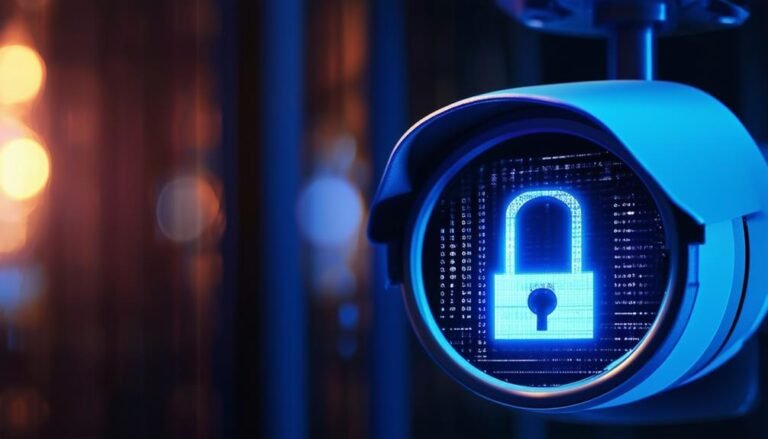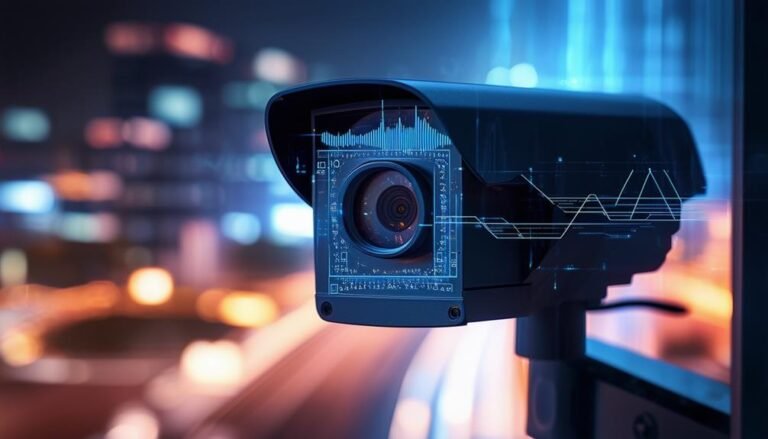To add your Hikvision IP camera to a Dahua NVR, start by ensuring both devices are powered on and connected to the same network. Access the Hikvision camera’s interface using its IP address and adjust the network settings to be within the same subnet as the Dahua NVR. Then, log into the Dahua NVR, go to the camera settings, and select “Add Camera.” Enter the camera’s IP address, port, username, and password accurately. After hitting “Add,” check the live feed to confirm it’s working. There are more details to fine-tune your setup effectively.
Understanding Compatibility
When setting up a Hikvision IP camera with a Dahua NVR, you’ll often find that compatibility is vital for a seamless integration. The first step in this journey is verifying that both devices can communicate effectively. Many users desire the freedom to mix and match their technology, but it’s important to recognize that not all brands play nicely together.
Hikvision cameras typically use the ONVIF protocol, which is designed to foster interoperability among various devices. Dahua NVRs also support ONVIF, making them capable of working with many third-party cameras. However, you’ll want to check the specifications of both your Hikvision camera and the Dahua NVR to verify they support the same versions of the ONVIF protocol. Compatibility can sometimes be a tricky game, and a little research can save you from potential headaches down the road.
Keep in mind that while ONVIF offers a good chance of integration, certain features may not be available when using cameras from different brands. For instance, advanced functionalities like motion detection or audio support may not work seamlessly. To truly enjoy the freedom to customize your surveillance system, consider sticking to devices from the same ecosystem when possible.
Ultimately, understanding compatibility not only enhances your setup experience but also empowers you to create a surveillance system tailored to your unique needs, blending functionality and flexibility harmoniously.
Preparing Your Devices
Before diving into the setup process, it’s essential to prepare your devices to guarantee a smooth integration. First, make sure your Dahua NVR and Hikvision IP camera are both powered on and connected to the same network. This ensures they can communicate without any hiccups. If you’re using a wired connection, check your Ethernet cables and ports to confirm everything’s properly plugged in and functioning.
Next, take a moment to familiarize yourself with the default IP addresses of both devices. Most Hikvision cameras have a default IP of 192.0.0.64, while Dahua NVRs typically use 192.168.1.108. You may need to adjust your computer’s IP settings to access the camera’s interface during configuration, so make certain your device is set to a compatible subnet.
Also, consider updating the firmware on both your NVR and camera if you haven’t done so recently. This not only enhances compatibility but often improves performance and security. Visit the manufacturers’ websites for the latest firmware updates. Remember, a little prep work goes a long way in avoiding headaches later.
Lastly, it’s wise to have your camera’s login credentials handy—typically a username and password. If you’ve changed these from the default settings, make certain you remember what they are. With everything in place, you’ll be ready to move on to configuring your camera without unnecessary delays. Enjoy the freedom of a well-prepared setup!
Configuring the Camera
With everything prepared, it’s time to configure your Hikvision IP camera to work seamlessly with your Dahua NVR. This step is essential to guarantee you get the most out of your surveillance setup. Let’s dive right into it. Here’s what you need to do:
- Access the Camera’s Interface: Open a web browser and enter the camera’s IP address. Log in using the default username and password, which you should change for security later.
- Set the Camera’s Network Settings: Navigate to the network settings section. Make sure the camera’s IP address is within the same subnet as your Dahua NVR. Adjust the subnet mask and gateway if necessary.
- Configure Video Settings: Go to the video settings section and select the desired resolution, frame rate, and bit rate. These settings will impact the quality of your footage, so choose wisely based on your needs.
- Save Changes: After making all necessary adjustments, don’t forget to click the ‘Save’ button. This guarantees that your settings are applied and the camera is ready for use.
Once you’ve completed these steps, your Hikvision IP camera should be configured properly to communicate with your Dahua NVR. You’re now one step closer to achieving a reliable and efficient surveillance system that gives you the freedom to monitor your surroundings effectively. Enjoy your newly configured setup!
Adding to Dahua NVR
Now that your Hikvision IP camera is configured, it’s time to add it to your Dahua NVR. This process is straightforward and gives you the freedom to expand your surveillance system. First, you’ll want to verify your NVR is powered on and connected to the same network as your camera.
Access the Dahua NVR interface by inputting its IP address into a web browser or connecting through a monitor. Once you’re in, navigate to the “Camera” or “Channel” settings. You’ll typically find an option labeled “Add Camera” or something similar. Click on it to start the process.
You’ll need to enter the camera’s details, including its IP address, port number, username, and password. These credentials are usually the same ones you set up when configuring the Hikvision camera. Make sure you double-check for any typos, as accuracy is key here.
After entering the required information, hit the “Add” or “Save” button. Your Dahua NVR will then attempt to connect to the camera. If successful, you’ll see the camera listed among your channels. It’s a great feeling to see your network grow, and you can now enjoy the enhanced security that comes with additional coverage.
Testing the Setup
To guarantee everything’s working properly, you should regularly test your setup after adding the Hikvision camera to your Dahua NVR. This guarantees that your security system is functioning as it should, providing you the peace of mind you deserve. Here’s how to effectively test your setup:
- Check Live Feed: Start by accessing the NVR interface and view the live feed from the Hikvision camera. Verify the image is clear and there are no connectivity issues.
- Test Recording: Trigger a recording by moving in front of the camera or setting up a scheduled recording. Later, confirm that the footage is saved correctly and can be played back without any hitches.
- Adjust Settings: Experiment with the camera settings, like resolution and frame rate. Watch how these adjustments affect the live feed and recorded footage. This allows you to optimize your setup.
- Network Stability: Conduct a speed test on your network. A stable connection is essential for guaranteeing video quality. If you notice lag or interruptions, consider reviewing your network setup.
Frequently Asked Questions
Can Hikvision Cameras Use Dahua’s Mobile App for Viewing?
Oh sure, you can totally mix apples and oranges, right? In reality, using Hikvision cameras with Dahua’s mobile app isn’t exactly a walk in the park. While both brands boast impressive features, their apps are designed for their respective cameras. So, if you’re dreaming of a seamless viewing experience, you might want to stick to the same brand. Why complicate your life when freedom lies in compatibility? Stick with what works best for you!
What to Do if the Camera Is Not Detected?
If your camera’s not detected, don’t panic. First, check the connections and confirm everything’s powered on. You’ll want to verify that the camera’s IP address is correctly set and matches your network. Restart both the camera and the NVR, as a simple reboot can fix many issues. Finally, confirm the firmware is updated on both devices; outdated software can lead to compatibility problems. Keep your setup running smoothly for that freedom you seek!
Are Firmware Updates Necessary for Compatibility?
Firmware updates are essential for maintaining compatibility and ensuring your devices work seamlessly. If you want your camera and NVR to communicate effectively, it’s wise to keep their firmware up to date. You don’t want to miss out on new features or security enhancements that can improve your experience. So, check for updates regularly, and don’t hesitate to update when necessary—your freedom to customize and enhance your setup depends on it!
Can I Mix Other Brands With Hikvision and Dahua Devices?
Yes, you can mix other brands with Hikvision and Dahua devices, but it might not always be straightforward. Compatibility can depend on several factors like protocols and firmware versions. You’ll want to confirm your devices support common standards like ONVIF for better integration. Just keep in mind, performance might vary, and you could run into issues with features or live feeds. So, it’s wise to do a little research before making any decisions.
How Do I Reset the Camera to Factory Settings?
To reset your camera to factory settings, you’ll need to find the reset button, usually located on the device. Press and hold that button for about 10-15 seconds until you see the indicator light change, signaling the reset. After that, your camera’s settings will return to defaults. Remember to reconnect it to your network afterward, so you can regain access and set it up according to your preferences again. Enjoy your freedom in surveillance!



